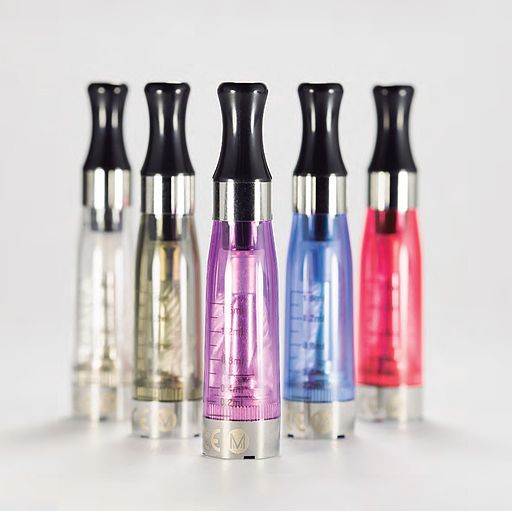Teens’ Use Of Electronic Cigarettes Worries Health Officials

November 25, 2014
By Samantha Ehlinger
WASHINGTON — More high school students are using electronic cigarettes, according to new findings, raising concerns among health officials that the growing diversification of tobacco products could get more young people addicted to nicotine.
While a new report from the Centers for Disease Control and Prevention shows that the overall percentage of teens using tobacco products hasn’t increased since 2012, health advocates were hoping to see a decrease.
“It’s really important to know there is no safe tobacco product,” said Brian King, a senior adviser with CDC’s office on smoking and health.
Earlier this year, a CDC report marking the 50th anniversary of the first U.S. surgeon general’s report on the dangers of tobacco predicted that 5.6 million young people up to age 17 “will die early from a cigarette smoking-related illness.”
The CDC report issued Thursday — the Morbidity and Mortality Weekly Report — used data from the 2013 National Youth Tobacco Survey. It found that nearly one in four high school students — almost 23 percent — reported using a tobacco product in the past 30 days.
The CDC said that 4.5 percent of high school students last year said they used e-cigarettes in the last 30 days, That’s compared with 2.8 percent in 2012.
E-cigarettes are battery-powered cigarettes that contain nicotine and emit a smoke-like vapor. Usage is up dramatically.
Hookah — a water pipe use to smoke flavored tobacco — is also popular: 5.2 percent of high school students said they had tried it in the last 30 days, comparable to 2012 when the rate was 5.4.
Nicole Lusk, a Maryland 16-year-old, said in an interview with McClatchy that she knows people younger than 18 who will go to the mall to buy an e-cigarette or a hookah kit.
“People at my school definitely use e-cigarettes and hookah,” said Lusk, who attends La Plata High School in Charles County. “It’s trendy, I guess.”
Smoking, according to the CDC, is the “leading cause of preventable death in the United States.” It causes more deaths in a year than alcohol, illegal drug use, motor vehicle accidents, firearms and HIV combined, the CDC says. It is also responsible for nine out of 10 deaths from lung cancer.
Since the groundbreaking surgeon general’s report half a century ago, the CDC says that cigarette smoking among U.S. adults has been cut in half. But Chris Hansen, president of the American Cancer Society Cancer Action Network, said the number of teens using tobacco was “alarming.”
“Perhaps most concerning,” he added, “is that the FDA currently regulates only cigarettes and smokeless tobacco, while the tobacco industry aggressively markets numerous unregulated tobacco products such as cigars, cigarillos, snus (a moist tobacco product placed under the user’s upper lip) and e-cigarettes to teens.”
The growing numbers of students using currently unregulated tobacco products should push the Federal Drug Administration to act on regulations, said Gregg Haifley, associate director of federal relations with the Cancer Action Network.
“This ought to be a wakeup call for the FDA to finalize its regulations,” he said.
John Lindsay, vice president of development at D.A.R.E., a group that helps students address issues such as drugs and violence, said parents have done a good job of teaching their children that smoking is unhealthy. But by vilifying traditional cigarettes, he said it might have left an opening for tobacco companies to market supposedly “cleaner” substances.
“I think inadvertently, we’ve created an illusion that there are safe ways to get a very dangerous substance,” Lindsay said.
———















